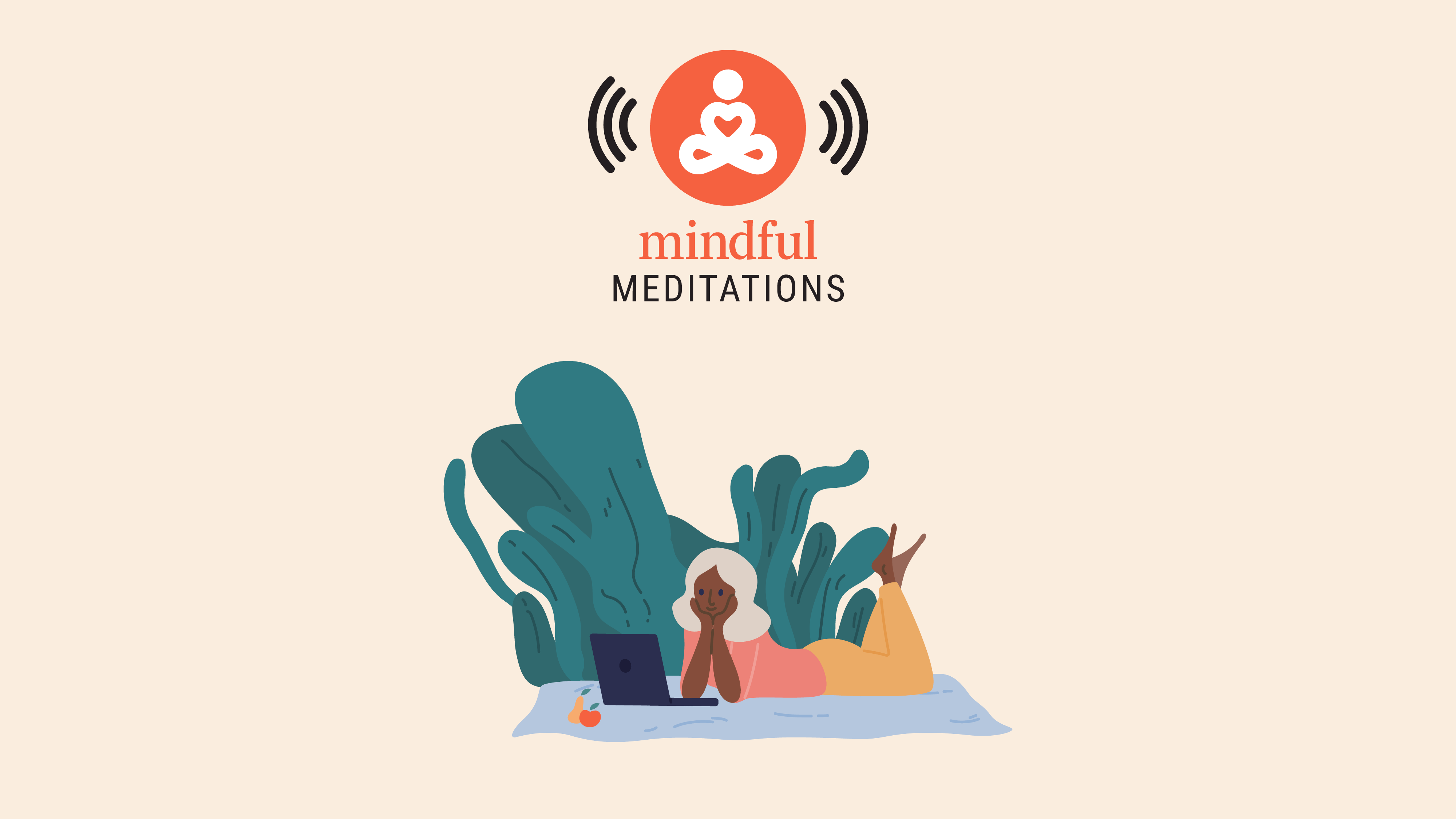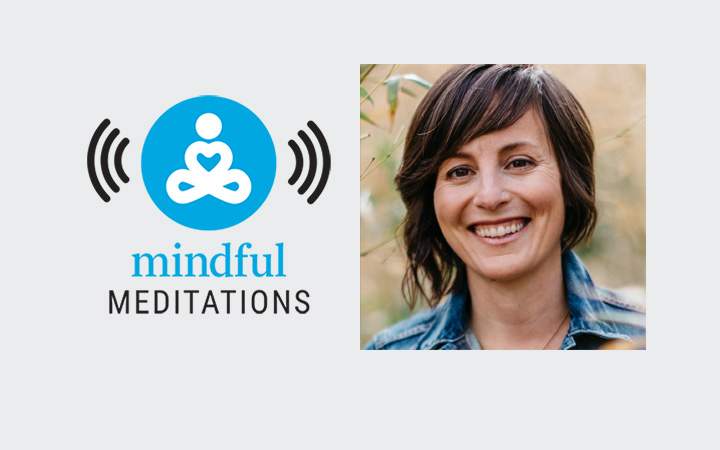After last session’s practice, perhaps you discovered some things about your relationship with your phone—maybe some of the triggers that move you to pick it up and engage with it? And conveniently, those powerful little devices have a few triggers built right in! Maybe you noticed that you pick up your phone right away when you hear that a text or an email has arrived. Or maybe you resist reacting that way, but in that pause you notice your brain looping around, wondering who the message is from and how important it is?
And how about rewards when it comes to your phone? Did you find temporary relief once you swiped your screen and read the message, or did you discover that action made you want to go back and check your phone even more often?
As we’ve explored this mini-course, rewards-based learning is incredibly powerful. The good news is that there are ways to interrupt the habit loops we form. Now that we’ve learned to notice the components of rewards-based learning from real examples in our own lives, we can start to work directly with the triggers, the behaviors, and the rewards that are essential to creating our habit loops.
Now that we’ve learned to notice the components of rewards-based learning, we can start to work directly with the triggers, the behaviors, and the rewards that are essential to creating our habit loops.
Let’s return to the example of the smoker who reaches for a cigarette when the stress-trigger strikes. Chances are that while the smoker remains operating on autopilot, he or she also remains pretty focused on the relative stress they feel. So, it’s high stress that moves them to smoke, followed by a reduction (however brief) of that stress. It’s a good recipe for a persistent habit loop.
But what if that same smoker starts to notice what smoking actuallyfeels like? And what if they pay attention to the feeling of what the actualresults are? We invite patients in our smoking-cessation clinics to do this, and what they start to notice very quickly is that smoking doesn’t actuallytaste that good. And the feeling of smoke filling up their lungs? When smokers focus on it, bring plenty of awareness to it, well, it’s not that great a sensation.
A part of our brain that’s good to understand here is the orbital frontal cortex: it lays down the memory related to reward. It’s called contingency, and it says, “Smoking is thisgood. And it turns out that smoking brings a better feeling than being stressed out. So I’d rather smoke.”
But if we begin to realize that smoking isn’t as good as we initially thought, simply by paying attention to how it feels, we have a way to at least question that habit loop. How good does smoking or overeating or engaging with our phones actually feel?
In the case of our phones, let’s do some comparatives. If we’re constantly checking our phones, we might compare the rewards of that behavior to what our live interactions with people feel like. When we notice how our phones can pull our attention away from where we actually are—maybe with family, friends or coworkers—we might also notice that the reward value of checking our phones (say, every five minutes) diminishes further.
Let’s explore this notion of relative rewards. This is where mindfulness comes in to help out. So, what feels better? Responding to my phone? Or staying with the conversation I’m already in with this person sitting across from me?
Consider this shifting from second to third gear. To recap: First gear is recognizing our habit loops that trigger behavior and a result or reward; and second gear is exploring more deeply what those rewards are and how they feel. We really get to ask ourselves here, what do I actuallyget from this; what is the actualreward?
If we’re talking about eating cupcakes, for example, we might notice: one cupcake is pretty good. Two cupcakes? Still tipping the scales toward satisfying. But after the third we might notice that those frosted cakes no longer taste as good. What’s powerful about this is that once we start to examine relative rewards, we naturally begin to recalibrate and change our behavior. And it’s not from forcing ourselves to change. It emerges from simply bringing kind, curious awareness to what we’re experiencing.
Let’s explore this with regards to habit loops that tend to form around stress and anxiety. These in particular can be tricky, but let’s give it a try. For example, when stressed, one of our loops may be to reach for our phone. We may notice, too, that by distracting ourselves for a few minutes, we feel a little bit better.
What about anxiety? Considering our ever-present “To Do” lists is usually enough to spike a bit of anxiousness. A common response to that is to start planning and thinking about all the ways we’re going to get our “To Do” list done. Planning and thinking become a way to feel a little bit better because we feel like we’re doing
But if we pause and try to notice what’s really happening, we may find that this loop—let’s call it a worry loop—doesn’t actually get that “To Do” list done. Then, inevitably, we go back to look at the list again (back to the trigger here), and now it’s even later in the day or week, and that To Do list is still just as big. And voila!our worry is now even bigger.
This is when we may notice that we’re bound up in an even tighter ball of anxiety. At this point, anxiety begins to trigger itself: it becomes the negative trigger that sparks even more worry-thinking. I think we can all agree that this is not a fun loop.
You might be feeling anxious right now just thinking about all this. Take a few breaths. And be reassured that our goal here is to better understand the stress and anxiety loops present in our lives. We’re looking at the component parts so that we can map out the habit loop and eventually ease ourselves into different behaviors around stress and anxiety.
Tame Your Feelings of Anxiety
Watch the video:
Listen to the practice:
Tame Your Feelings of Anxiety
Read the practice:
1. As you settle into a comfortable, quiet spot, simply bring your awareness to your breath and your body.All you need here is a light touch, some curiosity and a kind attitude. What sensations are most predominant for you right now?
2. Now, if you have a particular loop around stress or anxiety or worry, see if you can bring to mind one of those minor triggers for you. It could be your To Do list, or maybe it’s just one thing you need to get done for next week. Simply bring whatever it is to mind. At the same time, see if you can bring a wide-open, kind, curious awareness to it.
3. Try to notice how your mind and body react to this.Does your mind spiral down and clamp down saying, “Oh, no!”? See if you can bring a kind, curious awareness to that “oh, no” itself. What does oh-no feel like? Notice what this feels like in your body, too. Do you feel a tightness, heat, vibration, restlessness? Now see if the feeling resides more on your right side or left side; more in the front of your body or in the back. Just map where you feel it most. Notice all you can about how this feels in your body.
4. Rest with whatever you discover.It doesn’t matter what the answer is. The point of this is to experience a different way of being with whatever is right now in the present moment. The point is to have all these feelings and be curious about them. It’s in this way that we can begin to hack the rewards-based learning system that drives us in the direction of contraction. Simply by bringing a curious awareness to these feelings, we can open up that experience further. That’s because curiosity is naturally opening and expanding. We don’t have to clamp down or tighten up in response. We can have a different response.
5. Try this: whenever you feel worry rising and perhaps a growing tightness in response to that, try to tap into curiosity. Try to just bewith those thoughts and body sensations rather than dosomething about them. Beingrather than doing—see what that feels like by comparison.
6. Ask yourself as you explore: How good does worrying feel?And how good does curiosity feel? Even if you find that you are not curious, simply explore that: Why am I not curious about this? Sometimes that’s enough to get curiosity to pop into gear. When you’re ready, gently bring yourself back to the breath.
And so, I invite you to try what we’ve practiced over the past four sessions: noticing and mapping out your habit loops, becoming more and more aware of the triggers, behaviors and rewards; examining those rewards, bringing curiosity to the thoughts and bodily sensations that arise with those rewards; then asking yourself what it feels like to be curious about those thoughts and sensations. All of these steps add up to a pathway out of our habit loops. Just try bringing a kind, curious awareness to all of it and see how that might start to alter your relationship to these all-too-human experiences.
More mini-Courses
Build Emotional Resilience with Jessica Morey
In this 4-part series you’ll explore a series of meditations on building emotional resilience, learning how to mindfully practice with anger, anxiety, longing, and joy.
Read More




